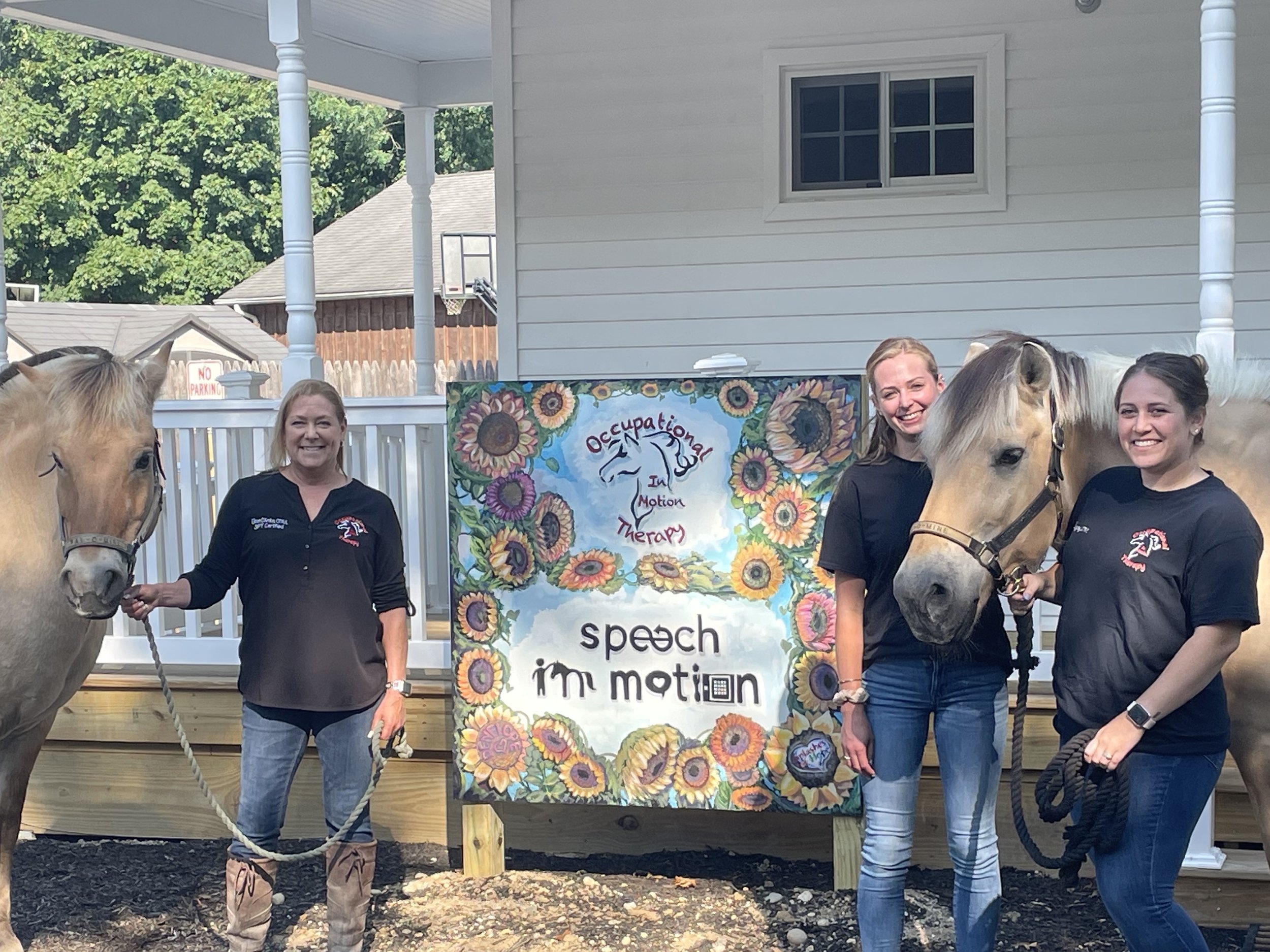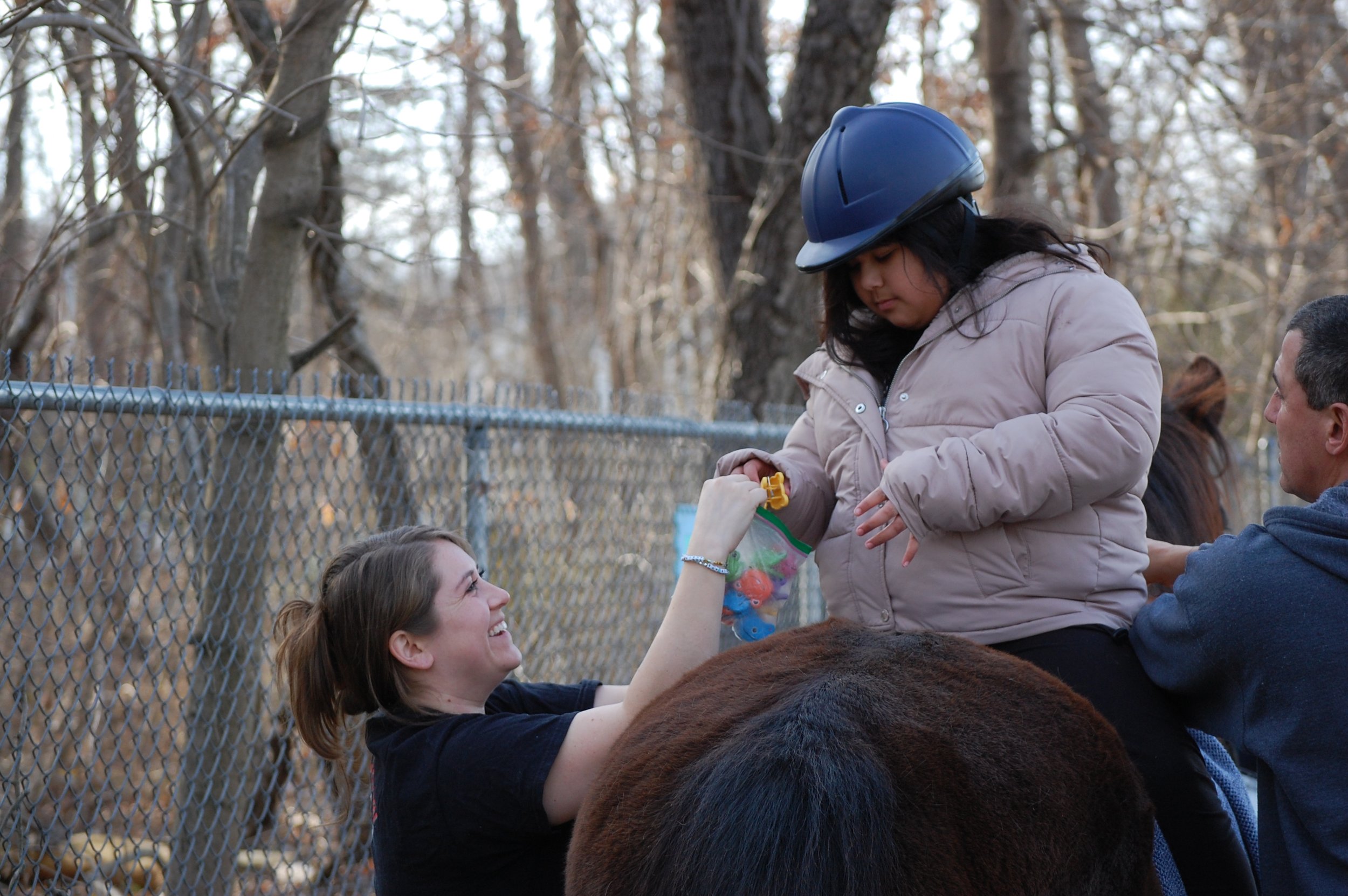Hippotherapy in Long Island: Enhancing Mobility, Balance, and Wellness with Equine-Assisted Therapy
Hippotherapy
Hippotherapy is an innovative therapeutic approach where occupational therapists, physical therapists, and speech-language pathologists use equine movement as a powerful treatment tool. This evidence-based practice engages sensory, neuromotor, and cognitive systems to promote functional outcomes. We incorporate hippotherapy into standard occupational therapy sessions. This powerful tool is part of a comprehensive intervention plan designed to address each client's unique treatment needs.
Benefits of Hippotherapy
Hippotherapy offers a wide range of benefits that can significantly improve a child's physical, cognitive, and emotional well-being. Our skilled pediatric therapists utilize equine movement to target and enhance:
Physical Benefits:
Muscle tone and strength
Gross and fine motor skills
Range of motion and mobility
Coordination and balance
Endurance and body symmetry
Body awareness and posture
Head and trunk control
Core strength and stability
Hand-eye coordination
Sensory and Neurological Benefits:
Sensory integration and processing
Attention span and focus
Body awareness and spatial orientation
Vestibular and proprioceptive stimulation
Communication and Cognitive Benefits:
Language development
Following multi-step instructions
Problem-solving skills
Visual-spatial skills
Emotional and Social Benefits:
Self-esteem and confidence
Emotional regulation
Social interaction skills
Empathy and animal bonding
Through the purposeful manipulation of equine movement, our pediatric therapists create a unique and engaging environment that promotes functional improvements across all these areas. Each session is tailored to the individual needs of the child, ensuring optimal outcomes and a positive therapeutic experience. This approach can be particularly beneficial for children with developmental delays, autism spectrum disorders, cerebral palsy, and other neurological or physical challenges.
The Power of Equine Movement
A horse walks at approximately 100 steps per minute
Just 5 minutes on a walking horse provides 500 neuromotor inputs
A typical 15-25 minute session delivers 1,500 to 2,500 neuromotor inputs
Who can Hippotherapy benefit?
At Occupational Therapy in Motion, occupational therapy sessions, specializing in hippotherapy, are designed to benefit children with a variety of developmental, neurological, and physical challenges. Our pediatric patients typically include children with conditions such as:
Behavioral Disorders
Developmental Delays
Attention Deficit Hyperactivity Disorder (ADHD)
Developmental Dyspraxia and Delay
Sensory Processing Disorder
Low Muscle Tone
Postural Weakness
Distractibility / Inattention
Gravitational Insecurity
Balance / Equilibrium Reactions
Auditory Processing Disorder
Motor Planning Difficulties
Visual Tracking Difficulties
Bilateral Coordination Difficulties
Hippotherapy: Myths vs. Facts
Myth: Hippotherapy is the same as therapeutic riding or adaptive horseback riding.
Fact: Hippotherapy is distinctly different from therapeutic riding or adaptive horseback riding. It is not a horseback riding lesson, nor should it be referred to as "equine therapy" or "horse therapy".
Myth: Hippotherapy is a separate program or service.
Fact: Hippotherapy is not a standalone program or a separate service. The term "hippotherapy program" is incorrect. Instead, hippotherapy is a treatment strategy that can be incorporated into occupational therapy, physical therapy, or speech-language pathology sessions.
Myth: There are specialized "hippotherapists".
Fact: In the United States, there is no such thing as a "hippotherapist". Hippotherapy is a tool used by licensed occupational therapists, physical therapists, and speech-language pathologists who have additional specialized training.
Myth: Doctors should prescribe "hippotherapy".
Fact: Doctors should not write prescriptions specifically for "hippotherapy". Instead, they should prescribe occupational therapy, physical therapy, or speech-language pathology as needed. The treating therapist will then determine the most appropriate treatment strategies, which may include hippotherapy.
Myth: Hippotherapy is a separate billable procedure.
Fact: Hippotherapy is not a separate billable procedure. It is one of many treatment strategies that a therapist might employ during a therapy session. For more information on billing, please refer to the American Hippotherapy Association's position statement.
Transform Your Child's Therapy Experience
Fill out some info and we will be in touch shortly. We can’t wait to hear from you!



